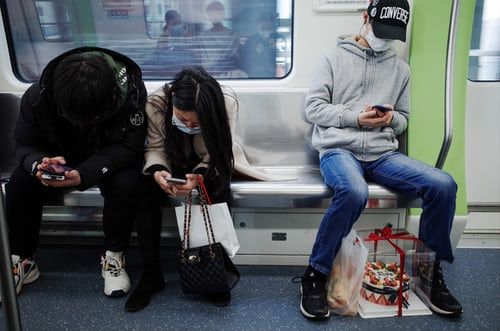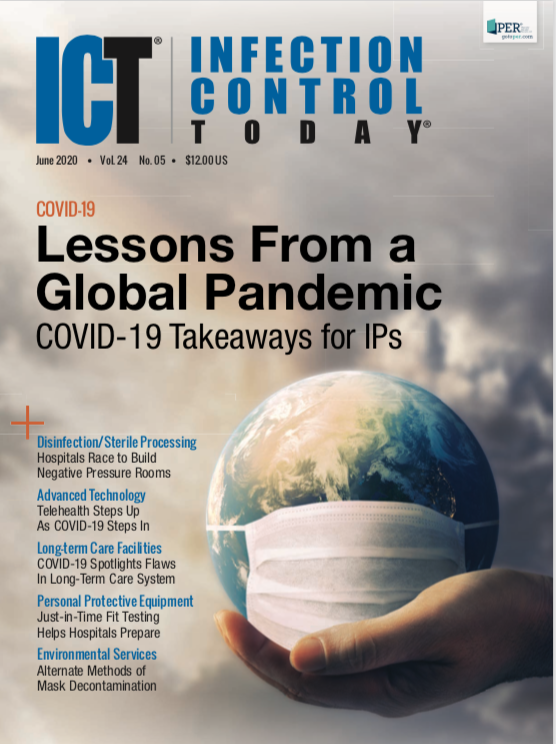Cloth Masks Are Useless Against COVID-19
Lisa Brosseau, ScD: "What we’re seeing is a lot of magical thinking. A lot of wishful thinking. Cloth masks are wishful thinking."

Lisa Brosseau, ScD, is a nationally recognized expert on infectious diseases. Brousseau taught for many years at the University of Illinois at Chicago. She may be retired from the university, but she’s not retired from teaching. She recently cowrote an opinion piecethat drew a lot of notice: In it Brousseau argues that cloth masks offer no protection from COVID-19. As one might imagine, it drew a lot of attention and caused a fair amount of controversy. She recently sat down with Infection Control Today®to talk about her strong feelings about cloth masks and that data she used to reach her conclusions.
Infection Control Today®: What made you decide to write the piece?
Lisa Brosseau: The article started out with the goal of trying to look at the literature related to cloth masks in healthcare. And then it got expanded way beyond that to cloth masks and surgical masks and respirators for healthcare and for the community. It was much more comprehensive than I expected it to be. Took me a little longer to write but at the end of the day, I was looking at cloth masks and surgical masks and respirators from several points of view. First of all, for healthcare and community, but also do they work as source control? Or do they work as personal protective equipment? Or both? And at the end of the day, cloth masks in my opinion don’t work in any form. They aren’t very good at source control, except for maybe very large particles. And they should not be used in healthcare settings for a number of reasons. Surgical masks, I decided, based on the literature, might have a role as source control for people who have symptoms. Say if they’re staying home and they have some symptoms. They shouldn’t be something you’d wear if you have symptoms going out into the public because you shouldn’t be going out into the public service. But it’s a good option for patients to wear in healthcare settings where they-especially for those who are experiencing symptoms-to what I would call diminish the viral load. Basically, decrease the amount of particles, infectious particles in the air in a healthcare setting. So, at the end of the day, the only thing that provides personal protection for the person wearing the mask is a respirator. And that is the thing that healthcare workers should be wearing. Particularly if we’re worried about the small aerosols, small particles that people will generate when they’re infectious. And in fact, people generate particles, whether they’re infectious or not. But particularly when they’re infected and infectious, that will be present in the vicinity of a patient. The best protection in that case is for the healthcare worker to wear a respirator. And I’ve got asked a little bit to think about respirators for the community. You know, if we had a lot of respirators, that might be a good idea, but we don’t have very many of them. And so, for the purposes of saving those respirators for the people who really need them, I recommended that the public not be wearing respirators and not be buying respirators. And if they had them, please donate them even to healthcare workers. That’s a good summary.
ICT®: You did a deep dive into the literature. I saw you had many, many references. So, the mystery to me is why did the CDC say to people go out and wear cloth masks if you want to?
Brosseau: What’s interesting to me is if you look at the references that were listed on under their recommendation, none of them have anything to do with masks or the performance of masks or the performance of their filters or any of that. They’re all references related to pre-symptomatic or asymptomatic transmission. I didn’t get the message there entirely, but I was glad to see is that they recognized that asymptomatic and pre-symptomatic transmission are happening. My message would have been if those were the references I was looking at, is maybe we should actually be encouraging people to stay home more. My biggest problem with telling people they can wear masks is it gives you this false sense of security. And it might even encourage you to think that now you’re protected and you’re protecting people around you. My husband and I try to take a walk every afternoon, just to get out, get a little bit of fresh air and exercise. And I’m seeing more and more people now wearing cloth masks on the streets. And I don’t go to stores anymore, but my understanding is they’re wearing them there as well. I don’t have a problem with people wearing them. I just want them to understand that they aren’t very much more protective than if they weren’t wearing them. And they’re really not doing a whole lot of good for the people around them. So, we should continue to do social distancing as much as we possibly can. I have places that are saying that you actually have to wear them. New York where you’re supposed to wear them anytime you’re in contact with people. I don’t know. I just think it’s not recognizing that the mode of transmission for this organism is likely small aerosols and close range and wearing a cloth mask shouldn’t give you any feeling of safety for being close to people. It shouldn’t make you feel that you’re not generating small particles because you still are. And since we none of us know if we’re infected or infectious, many of us probably are and aren’t going to have symptoms because we know that that’s the case for at least some fraction of the population that we’re putting everyone around us at risk. And especially the people I most care about are the workers. Our essential workers are really key to our success in flattening the curve. And they’re the ones who make it possible for us to stay home and be isolated those of us who are privileged enough to have that opportunity. But we go out and think that we are doing something good for the public and the workers, and we’re actually not. I think we put them at more risk. So, I don’t understand the CDC’s recommendations for this. My guess is that there’s a lot of political pressure. And no government agency is entirely immune from political pressure. There’s pressure to open, right? There’s pressure to restart the economy. I understand that entirely. And so I think the feeling was, probably if we give everybody a mask, we can just reopen and everything’s going to be fine. I think we’re going to be shocked to find that that’s not going to work. And I mean, I won’t be shocked, but there will be lots of people who will be shocked. And in fact, I read an article recently about a funeral. A number of people who attended the funeral. They were all wearing masks. They were taking photos next to each other. They were talking and a number of people got infected. So, it’s very clear these things do no good.
ICT®: Have you gotten much feedback from healthcare workers or healthcare experts themselves?
Brosseau: Oh, yeah. There are a number who don’t agree, but there are a lot of people who didn’t agree with my first article about aerosol transmission either. I’m sort of used to it. The important thing is to say, here’s what the science tells us. My conversations with people these days, I often point out that what we’re seeing is a lot of magical thinking. A lot of wishful thinking. Cloth masks are wishful thinking. And people saying, well, they worked in Asia. There’s no evidence that they worked in Asia. In fact, it’s very clear that the healthcare workers in China, they may have been wearing cloth masks to start with, but when you look at pictures of what they were wearing later, they were wearing respirators. They were wearing full face gear and body gear and gloves. It was clear that even surgical masks weren’t working in healthcare settings or controlling COVID-19. I don’t understand it. The Asian countries wear masks for societal and cultural reasons, not because they actually think they’re protecting. I’m not an expert in epidemiology. So, I will leave the modeling to the to those who know more about how this is going to work, but I do know my history. And if you read about the 1918 influenza and the pandemic, it took almost two years for that to be completely done with. They did a lot of similar things. They closed down. They opened again. Then they had to close down and then they had to open again. Now, granted, they didn’t have a lot of what we have today. But in some ways, we’re not all that different from 1918. We don’t have any testing. We don’t have any contact tracing. They didn’t either. They didn’t even really know about that. They didn’t know much about viruses. So, we have huge amounts of scientific information. But we have almost no infrastructure anymore in public health. Without our infrastructure in public health and our resources to do contact tracing and testing…. And testing, I mean with tests that really work that are both highly specific and highly sensitive. And we don’t have any of those yet. In many ways we’re being forced to make many of the same decisions that were made during the 1918 influenza pandemic. And the results are going to be similar. We are trying to decide when to open it back up. No one really knows the perfect answer to that. The models, they’re not perfect, right? I know infection preventionists are often pulled in two directions. One is they have to worry about patients. The other is they have to worry about workers. And sometimes the things you do for patients don’t work for workers and sometimes the other way around. That’s why I recommend including your health and safety people, industrial hygienists, and others, because they can give you that perspective about workers that will help you make good decisions for both. And really, it should be a hand-in-hand decision making that goes on.
ICT®: Any final words about cloth masks?
Brosseau: I would really strongly encourage hospitals to stop asking people to send them cloth masks and instead asked for respirators. I don’t necessarily discourage the public from wearing them if it makes them feel comfortable, but I hope they don’t think that they’re protecting themselves.
This interview has been edited for clarity and length.

“Ongoing Assault”: How HHS Layoffs Have Eviscerated Infection Prevention Support Across the Nation
April 1st 2025Mass layoffs at HHS and CDC have gutted critical infection prevention programs, leaving frontline professionals overwhelmed, under-resourced, and desperate to safeguard public health.
Unmasking Long COVID: Dr Noah Greenspan on Recovery, Research Gaps, and the Future of Treatment
March 18th 2025Dr Noah Greenspan discusses the evolving understanding of long COVID, current treatment strategies, diagnostic challenges, and the critical need for research and awareness in post-viral syndromes.